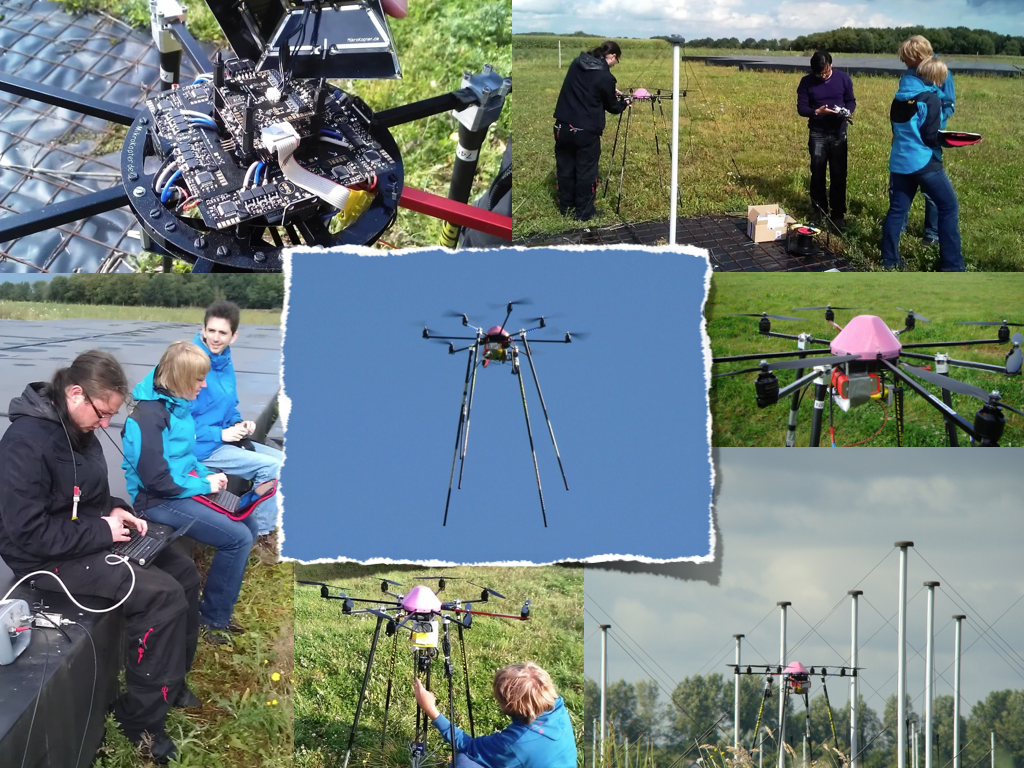Daily Image
09-10-2012Octocopter in action above LOFAR
| Submitter: | Menno Norden, Wilfred Frieswijk, the CR group and the Octocopter team |
| Description: | In the week of September 17-21, a group of people from the Radboud University Nijmegen, Aachen and Astron performed a three-day measurement campaign with LOFAR core-stations using a highly advanced toy. http://www.youtube.com/watch?v=9zqu_RQ1ZNQ&feature=youtu.be This so-called octocopter is equipped with GPS, a gyro and eight electro-motors that can each carry a maximum payload of 2kg. The current-consumption varies between 1 and 20 Ampere. The battery is 12V/6600mAh and can only be used for a single 5-10 minutes flight. The payload consisted of a TX-antenna, 50 meter of thin coax cable and a second GPS antenna including a receiver/transmitter unit. The octocopter was first used on station CS302 to measure the LBA element-pattern of both a sparse-array element and a central LBA-inner element. This was not an easy task because of periodic rain showers and variable wind conditions, making it difficult for the pilot and octocopter to maintain a stable transmission position at 40 meters altitude. The GPS receiver is directly linked via Bluetooth to a laptop and is used, together with the second GPS at known position, to determine the differential GPS-location of the octocopter during the measurements. This results in a position-measurement accuracy in the cm range. For the Superterp measurements the TX-antenna and coax cable were replaced by a pulsed transmitter, transmitting a 250V electromagnetic pulse every 8 microseconds. The octocopter was flying 40 meters above the center of the superterp (CS002-LBA0) and triggered all superterp stations in the LBA_INNER, LBA_OUTER and HBA modes. The transient buffer boards (TBB) recorded the data, which were manually dumped to the central processing units in Groningen. We hope that the quality of the measurements is sufficiently good to study effects of timing and element pattern in more detail. You will likely hear more about this exiting project in future AJDI contributions. |
| Copyright: | WF & MN |
| Tweet |  |
